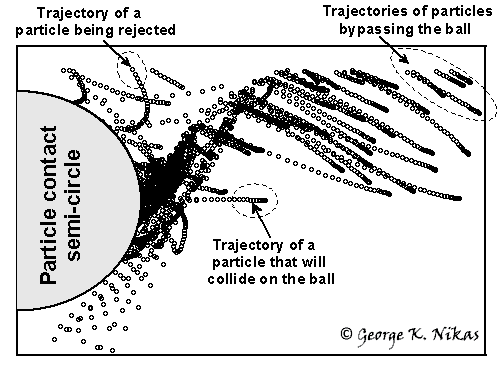
Article: Particle entrainment in elastohydrodynamic point contacts and related risks of oil starvation and surface indentation.
Author: George K. Nikas
Published
in:
Transactions
of the American Society of Mechanical Engineers (ASME), Journal of
Tribology, 2002, 124(3), 461-467
Abstract
This theoretical study concentrates on the mathematical analysis of the motion of small (5-50 microns) spherical solid particles in the inlet zone of elastohydrodynamic point contacts, found in various machine elements as, for example, in ball bearings, in order to compute the particle trajectories in the fluid flow. Particles may collide on a moving element of the contact (e.g., a ball in a bearing) or bypass it. For those particles that collide on another element, a fluid and mechanical force analysis reveals if they will be entrapped and, possibly, cause surface damage, or temporarily or finally expelled. Particle rejection is associated with the risk of inlet blockage and fluid starvation, which may further cause film collapse and scuffing. This study gives useful evidence of the probabilities of particle entrapment or rejection, extending the concept to evaluate the probabilities of oil starvation, surface indentation, or both, under various operating conditions.
A figure from this work
An example of the simulation is presented in the next figure, which shows 30 possible trajectories of a 20 micron spherical solid particle left in front of a ball rolling-sliding on a flat surface. The film thickness far away from the ball is 100 microns. The particle is left on the flat and is affected by the fluid flow created by the moving ball. Depending on its initial position, the particle may collide with the ball, become entrapped, be rejected by the ball, or completely bypass it. The "Particle contact semi-circle" is the line defining the imaginary boundary where a particle will come in first (undeformed) contact with both the ball and the flat (that is, the particle cannot enter that semi-circular area without being deformed first).

30 possible trajectories of a 20 micron particle left on the upper half area of the graph.